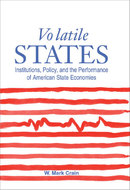Investing in the stock market can be a thrilling and potentially lucrative endeavor. However, it also comes with its fair share of risks. One factor that investors need to understand and consider is volatility. Volatility refers to the rapid and significant price fluctuations of a stock or the overall market.
In this article, we will delve into the topic of stock volatility, exploring its definition, factors influencing it, and strategies for navigating this dynamic investment landscape.
Introduction
Understanding volatility in the stock market is crucial for both short-term traders and long-term investors. Volatility refers to the rapid price fluctuations that occur within a given period, driven by various factors such as economic indicators, company performance, and investor sentiment.
For short-term traders, volatility presents opportunities for quick profits through strategies like day trading or swing trading. However, it also comes with increased risk due to rapid price movements.
Long-term investors need to comprehend volatility to make informed decisions about their investments and manage risk effectively. By analyzing historical patterns and using fundamental analysis techniques, investors can assess stability and growth prospects.
Understanding volatility helps determine an appropriate investment strategy based on risk tolerance.
Additionally, managing risk involves diversifying portfolios across different asset classes or sectors to reduce exposure to any single investment’s volatilities.
Ultimately, understanding volatility empowers individuals to navigate the stock market confidently and potentially achieve their financial goals.
Understanding Volatility in the Stock Market
Volatility in the stock market refers to the degree of variation in a stock’s price over time. It measures how quickly and significantly prices move up or down. Several factors contribute to stock market volatility, including market sentiment, economic indicators, company-specific news, and global events.
Investor emotions and perceptions can drive rapid price movements, while economic data releases and company-related developments can cause substantial fluctuations. Additionally, global events such as geopolitical tensions or natural disasters can create turbulence in the market.
Understanding volatility is crucial for investors to make informed decisions and manage risks effectively.
Analyzing Historical Volatility of Stocks
Analyzing historical volatility is crucial for investors to understand the risks and rewards associated with stocks. By examining past price movements, patterns, and periods of heightened volatility, investors can make informed investment decisions.
Current market trends and events also play a significant role in stock market volatility. During economic recessions or financial crises, overall market volatility tends to increase as investors react to negative news and uncertainty. Conversely, during periods of economic growth and stability, volatility may decrease as investor confidence rises.
To analyze historical volatility effectively, investors use statistical measures like standard deviation and beta coefficient. These metrics provide insights into a stock’s past performance relative to the overall market or specific industry sectors.
By understanding historical volatility, investors can assess their risk tolerance accurately and make appropriate investment strategies. Incorporating both historical data and current market conditions helps navigate through various market conditions while maximizing potential returns.
In summary, analyzing historical volatility helps investors identify risks and rewards in stocks by examining past price movements. Current market trends and events also influence stock market volatility. Utilizing statistical measures allows for a more accurate assessment of a stock’s performance.
Understanding historical volatility enables informed decision-making for optimized investment strategies.
Comparing Industry-Specific Volatility
Different industries exhibit varying levels of volatility, influencing investment strategies. Technology, biotechnology, and energy are known for high volatility due to factors like technological advancements and regulatory changes.
In contrast, stable sectors such as utilities and consumer staples experience less price fluctuation due to consistent demand. Analyzing case studies of volatile stocks like Tesla Inc. and GameStop Corp provides insights into market dynamics driven by investor sentiment or company-specific news.
Understanding industry-specific volatility helps investors diversify portfolios and make informed decisions aligned with their risk tolerance and goals.
| Industry | Volatility Level |
|---|---|
| Technology | High |
| Biotechnology | High |
| Energy | High |
| Utilities | Low |
| Consumer Staples | Low |
Comparing volatility levels across industries aids in effective risk management and portfolio diversification.
Strategies for Investing in Highly Volatile Stocks
Investing in highly volatile stocks requires a strategic approach to manage the risks and maximize potential returns. Here are two key strategies to consider:
-
Diversification: Spread your investments across different sectors and asset classes. This reduces exposure to any single stock’s volatility and helps mitigate associated risks.
-
Stop-loss orders: Set predetermined price levels at which you automatically sell a stock. This limits potential losses by exiting positions before significant declines occur.
Additionally, there are two main approaches to investing in volatile stocks:
-
Short-term trading: Take advantage of short-lived price movements and capitalize on volatility through day trading or swing trading strategies.
-
Long-term investment: Adopt a buy-and-hold or dollar-cost averaging strategy, focusing on the stock’s long-term growth potential while weathering short-term fluctuations.
By incorporating these strategies and understanding their respective benefits and risks, you can navigate the challenges and opportunities presented by highly volatile stocks effectively.
Most Volatile Stocks in Recent Years
In recent years, certain stocks have gained attention for their exceptional volatility. Two notable examples are Tesla Inc. and GameStop Corp.
Tesla Inc., led by Elon Musk, has experienced significant price swings driven by factors like Musk’s tweets, production milestones, and market sentiment towards electric vehicles.
GameStop Corp., a video game retailer, became the center of attention when it was targeted by short-sellers on Reddit’s WallStreetBets forum. This resulted in an unprecedented surge in its stock price as retail investors clashed with institutional investors.
Analyzing these case studies highlights the impact of external events and market sentiments on stock prices. It also emphasizes the role of social media platforms in influencing investor behavior and driving volatility.
Investors should be aware of the risks associated with highly volatile stocks before making investment decisions. While they offer potential gains, they also come with increased uncertainty and higher levels of risk.
Overall, studying the most volatile stocks provides insights into how external factors contribute to significant price swings. Understanding these dynamics helps investors navigate turbulent markets while considering both the potential rewards and risks involved.
The Pros and Cons of Investing in Highly Volatile Stocks
Investing in highly volatile stocks has both advantages and disadvantages. On the positive side, these stocks can offer significant gains within short periods if timed correctly. They also present opportunities to buy undervalued stocks during market downturns.
However, investing in such stocks comes with higher risks and the potential for significant losses. Managing volatile investments can be emotionally challenging due to constant monitoring and pressure to make timely decisions. It is important for investors to carefully consider these factors before venturing into highly volatile stocks.
Strategies for Navigating Volatile Stocks
Navigating volatile stocks requires effective strategies that enable investors to make informed decisions in a timely manner. Here are two key approaches:
-
Stay Informed: Keeping up with real-time stock market data and news alerts is crucial. This information allows investors to react quickly to changing market conditions and adjust their strategies accordingly.
-
Seek Expertise: Following reputable financial analysts and experts provides valuable insights into market dynamics. Consulting with certified financial planners or investment advisors can also offer guidance tailored to individual risk tolerance and help develop diversified portfolios.
By utilizing technology, staying informed, learning from experienced investors, and seeking professional advice, investors can navigate the challenges of volatile stocks successfully.
[lyte id=’mbvUln4hBq0′]






